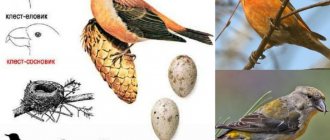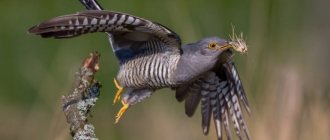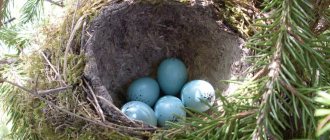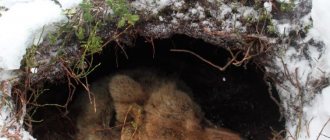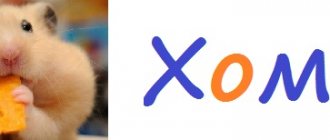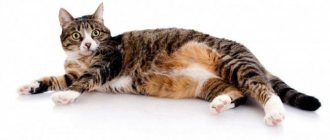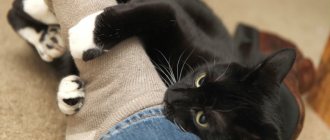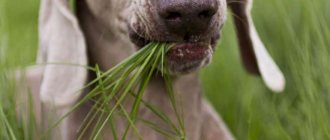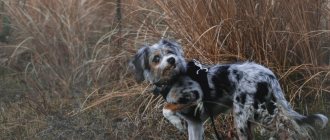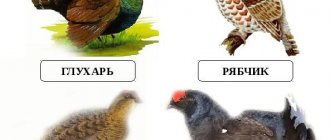- Published 01/16/2016
- Why the chick's questions
- No comments.
| ✿ 7 274
As soon as winter comes, most birds fly away to warmer climes. There they get their food and breed. Our forests are empty in winter. But there are also birds that remain in their territories and do not fly away anywhere. They look for food here, but forget about their offspring during the cold weather. Not all birds do this. There are also birds that hatch their chicks in winter. There are very few such birds. Among them are penguins, but their habitat is always extremely cold. Therefore, they have nowhere to go. However, there are similar birds in our climate zone.\r\n
Penguin - resident of the Antarctic Circle
Penguins are classified as flightless birds .
But they are excellent swimmers and divers. The body of these birds is elongated, but quite plump. The head is small in size and set on a flexible short neck. The beak is sharp and strong, designed for hunting. The thick short legs have 4 toes connected by membranes. The penguin always maintains a strictly vertical body position; its short tail, on which the bird leans on occasion, helps it maintain balance. The plumage has a thick and dense structure, which protects the body in water from hypothermia.
How penguins hatch their chicks
Crossbill - an inhabitant of the taiga
This bird, which lives in forests, is listed in the Moscow Red Book, as it has been relatively rare in recent years. Crossbill lives in coniferous forests . This bird is slightly larger in size than a sparrow. The plumage of the male and female looks different.
Males are bright, red-breasted, females look more modest, their plumage is gray-green. The crossbill's beak is shaped like a parrot's beak. Nature made it such that birds could easily break off pieces of bark, branches, and peel pine cones.
The basis of the crossbill's nutrition is the seeds of spruce and other coniferous trees. If there is not enough food, birds include in their diet the seeds of other plants that they can obtain, as well as insects.
This is another bird that breeds its offspring in winter. This is explained quite simply. It is by winter that the seeds in spruce cones ripen , which means that the chicks will not be left without food, because their diet consists of crushed seeds of coniferous trees.
Offspring of crossbills
Some people mistakenly believe that the kingfisher also breeds offspring in winter, relying on its name, but no. Although these birds live on the territory of our country, they do not winter here . And they begin to build nests when they return from wintering in early spring. In winter, pairs of these birds generally separate, uniting again in the spring to give birth to offspring.
Source
Crossbills are selfless parents
In anticipation of their offspring, crossbills make a cozy nest in spruce branches, insulating it from the inside with soft materials: moss, wool, their feathers and down. The female lays 3 to 5 eggs in this nest and incubates the clutch for two weeks. At this time, her father crossbill feeds her. The babies hatch quite helpless, their parents help them survive: mom warms them with her warmth, dad brings food.
Parents have to feed their babies for quite a long time. Firstly, because they are small and cannot fly yet. Secondly, their beaks are still straight, and with such a beak you cannot get seeds from a cone. Over time, the babies grow up, stand up on the wing, their beaks acquire a cross-shaped shape and they become completely independent. Thanks to the spruce cones, which, ripening for winter, enable the chicks to survive and gain strength!
So we found out who breeds chicks in winter and why in winter and not in summer, like other birds. The rest of the birds need insects to feed their offspring, which, of course, cannot be found in winter. But crossbills don’t need butterflies, give them cones!
Which bird hatches its chicks in winter?
For most species of birds, winter is a difficult time, when concerns about food come to the fore, and not about breeding offspring. Some birds prefer to fly to warmer climes for the winter, while others move closer to human habitation in the hope of getting some food. But there is also an absolutely amazing species of birds that not only does not experience much suffering in the frosty winter, but also breeds in the coldest time of the year.
These birds are crossbills, but the fact that they hatch chicks in winter is not their only feature. In this article we will take a closer look at the habits and habits of crossbills that are atypical for birds.
REPRODUCTION
Crossbills, like all birds, hatch their chicks when there is enough food. Birds are concerned that it can be easily found near the nest, because in this case there is no need to leave eggs and chicks unattended for a long time. In addition, the chicks, having left the nest, will also not be left without food, so chicks appear in crossbills not only in winter, but also in autumn and spring. However, most often the nesting period occurs in December-May.
Crossbills build nests when there is still deep snow everywhere and there are severe frosts. One of the elements of the mating ritual of these birds is that the male and female feed each other seeds.
After mating, both birds begin building a nest. It is located on spruce paws, under the cover of branches that protect birds sitting on the nest, and in the future, chicks from snow and rain. The nest of crossbills is large and well insulated. The female lays 3-4 eggs. Incubation lasts 12-13 days. Crossbill chicks remain in the nest for about 2 weeks, but even after leaving the nest, the parents continue to feed them. In lean years, many chicks die.
Which bird hatches its chicks in winter?
Externally, the crossbill is very similar to an ordinary sparrow. And although the bird itself is not very large, it is widely known to wildlife lovers for its unusual features and even some oddities (Figure 1).
Note: From the point of view of scientific classification, the crossbill belongs to the Passeriformes family. Indeed, in appearance this bird is very similar to an ordinary sparrow, although there are still significant differences between them.
First of all, the crossbill stands out among other birds with its bright plumage. It is because of the color of their feathers that they are often called “northern parrots.” For example, the back and wings of males are colored brown or bright crimson, while the belly remains gray and white. Females look a little simpler, but still stand out with their gray-green plumage with a slight yellow tint.
The second unusual feature lies in the shape of the beak. Unlike other members of the family, whose beak is small and regular in shape, the crossbill’s beak is quite large, and its ends are twisted, forming something like a cross (presumably, this is where the name of the species comes from).
In addition, crossbills have strong legs and very tenacious claws. They are necessary for birds to be securely fixed on a branch during feeding, because these birds often eat food while hanging upside down. They also need tenacious claws in order to firmly grasp the pine cone.
Figure 1. External features of the view
In total, there are 5 subspecies of crossbills in nature, but in Russia they are found mainly in spruce and pine. The names of these subspecies directly indicate dietary preferences, because they feed mainly on conifer cones, but if there is a lack of food, they can also eat buds, resin, aphids, ash or maple seeds.
The diet also explains another strange feature of these birds: the corpses of dead individuals do not decompose for a long time. This is explained by the fact that during their entire life, crossbills eat so much pine resin that after death their bodies mummify on their own and may not decompose for decades.
Crossbills also have excellent singing abilities. Despite the fact that in the wild he uses his voice primarily to communicate with his fellow birds, he can easily reproduce the trills of other birds. But still, the main feature due to which crossbills have become almost a legend is that they prefer to hatch their offspring in February, at the height of frost.
Description of crossbill
In spring and summer, a troublesome time begins for all inhabitants of the earth. All the birds are fussing about in their nests. Some are waiting for the offspring, others have already waited for it, feed the babies, and improve their homes.
Among all this bustle, you can notice small birds of dark red plumage with dark wings, which, it would seem, do not care about anything. With a calm look, they flutter through the spruce trees, straightening out the cones and quietly starting their conversations, because crossbills hatch their offspring in winter.
The crossbill bird is quite easy to distinguish from all its other brothers. The bird has an unusual beak with halves crossed with each other. Due to the fact that the beak is quite strong, the bird can easily break spruce branches, a pine cone or the bark of a tree with it.
The size of this bird is small. Its length is about 20 cm. The physique is dense. In addition to the unusual beak of the crossbill, its forked tail also catches the eye.
Some say that the bird’s beak is designed precisely so that it is easy for the bird to feed, while others explain its structure with one beautiful legend. They say that during the crucifixion of Christ, this bird tried to pull nails out of his body.
But since its size is no more than a sparrow and the bird has correspondingly little strength, it did not succeed. But the beak was permanently damaged. The bird has very tenacious legs, which allows it to easily climb trees and hang upside down to reach a pine cone.
The color of the females is slightly different from the color of the males. The breast of males is crimson, while the breasts of females are green interspersed with gray. The predominant color in the tails and wings of birds is brown.
Birds sing at high notes. Whistling is mixed with their chirping. These sounds are mainly heard during flights. The rest of the time the birds prefer to remain silent.
Listen to the voice of the crossbill
Crossbills, based on their characteristics, external characteristics and habitats, are divided into species, the main ones of which are spruce crossbills, white-winged crossbills and pine crossbills.
All species of crossbills are diurnal. You can notice them everywhere. In search of food, they quickly fly from place to place in large noisy and noisy flocks.
Why does the crossbill hatch chicks in winter?
The crossbill is such an unusual bird that many legends have developed around it, including those of a religious nature. For example, the unusual shape of the beak, from the point of view of legend, was formed because it was the crossbill that tried to free the crucified Jesus from the nail. And since this testified to the bird’s courage and devotion, it was granted immortality. Similar legends concern the time of hatching of chicks: they appear in winter, since Christmas is celebrated during this season.
Figure 2. In winter, forests provide the most food for these birds
Of course, such legends can be very fascinating, but each of the features described above has a completely logical scientific explanation. The unusual shape of the beak is needed in order to extract seeds from cones, and the so-called incorruptibility of the ashes is explained by the high content of coniferous tree resins in the bird’s body. And the unusual time for breeding offspring is explained quite logically: it is in winter that many seeds can be found in spruce and pine cones, and they form the basis of the bird’s diet.
Note: Contrary to popular belief, not all crossbill subspecies breed exclusively in winter. Some build nests in spring or even summer. In fact, only individuals living in coniferous forests have this unusual feature.
In addition to the fact that it is in February that pine and spruce cones ripen, the unusual time for breeding offspring is explained by other facts. For example, many birds fly to warmer climes for the winter, and crossbills simply have no competition in terms of choosing or arranging nests. Also, many fur-bearing animals hibernate during the winter, which can pose a danger to their offspring. All these facts indicate that the crossbill has really adapted well to life and has chosen the most optimal time for raising chicks (Figure 2).
BIBLE OBSERVATIONS
Crossbill lives in coniferous forests of Europe, Asia, North America and North-West Africa. The nesting sites of these birds are unstable, as the birds constantly roam in search of feeding sites. When the food harvest fails, they can fly away from the forests and appear in the steppes and even deserts. The spruce crossbill is slightly larger in size. The birds do not look very dexterous, but this impression immediately disappears when you see them on a tree. The crossbill not only runs quickly along the branches and turns over on them, but also runs upside down. No wonder the famous zoologist Alfred Brehm called it the “northern parrot.” There are several types of crossbills, including pine crossbill and white-winged crossbill.
- The beaks of crossbill chicks are straight. Parents feed their babies with semi-digested seeds, a special gruel that forms in their crops. Over time, the chicks' beaks change shape.
- Previously, crossbills were considered holy birds. This idea was born for several reasons. Firstly, bird corpses do not decompose for a long time (birds seem to be “tarred” with the resin of coniferous plants). Secondly, they have cross-shaped beaks (needed for obtaining seeds). And thirdly, they nest in winter, but their featherless chicks do not freeze (crossbills have warm nests).
- Some foresters believe that crossbills harm spruce trees, but this opinion is wrong.
What does the crossbill feed its chicks?
As we have already mentioned in previous sections, the basis of the diet of crossbills is seeds from spruce or pine cones. Moreover, such a menu is acceptable not only for adults, but also for chicks that have just been born.
Naturally, a small crossbill is not able to swallow the seed on its own, so parents have to put a lot of effort into preparing the so-called “porridge.” The male leaves the nest daily and brings back seeds extracted from the cones. Next, the female grinds the food and moistens it with her own saliva, turning it into a homogeneous paste (Figure 4). This is what the chicks will feed on until they are two months old. During this period, they reach puberty, and their beak bends, so they become able to obtain food on their own.
Since the seeds in the cones ripen only in the cold season, crossbills have adapted to hatch chicks in winter. In summer or spring, these birds simply would have nothing to feed their offspring.
You will find more interesting facts about these unusual forest birds in the video.
Source
Cartoon for kids about crossbill
In this cartoon, kids will get acquainted with forest inhabitants and find out who spends the winter how. After watching the cartoon, ask your child: “Why couldn’t the thrush (caterpillar, bear, crossbill) come to the little hare for the New Year? Who came to the Christmas tree? (Look at the last shots - bullfinches, foxes, fawns, wild boars, squirrels, hares).” Ask which of the forest inhabitants your child would invite to the New Year's party (who could come to it). Who would you invite to a summer party?
https://youtu.be/wOvOuLQ4VAc
What birds hatch chicks in winter and why does this happen?
Winter is a harsh time for birds and animals. Bears hibernate, heat-loving birds fly away to warmer climes, and sedentary birds stay close to human habitation, where they can get hold of something edible. And only a few birds take risks: they not only stay in temperate latitudes all winter, but also breed offspring, despite severe frosts. So which birds hatch their chicks in winter?
The first one that comes to mind is the kingfisher. Previously, there was a belief that this bird hatches its chicks in winter, since the kingfisher hides its nests quite skillfully, and finding them is problematic.
Crossbill - a hardworking forest dweller
The crossbill is not afraid of frost and hatches its chicks in winter. The bird chooses this particular period of the year, since the seeds in the fir cones ripen by winter. Adult crossbills feed their young “spruce porridge”, crushing spruce grains in their beaks and moistening them with saliva. In March, when the scales of the cones open under the rays of the sun and the ripened grains fall to the ground, the cubs begin to fly and look for food on their own.
Crossbills are very caring parents. Since the offspring are born in cold January or February, they carefully arrange their nests in spruce branches, insulating them with moss, wool, feathers and down. While mom sits on the eggs, warming them with her warmth, dad gets food. By the way, in addition to cones, they also feed on maple and ash seeds, and in lean years they do not disdain berries and insects.
Find out also: TOP 10 most dangerous animals in the world.
What are the rarest animals in the world? Read our article.
Crossbills are diurnal birds, very noisy and active. They appear in coniferous forests in large numbers during the years of a good pine cone harvest, and with their cheerful chirping and clicking they enliven the gloomy silence of the winter forest. This representative of the finch family can also be bred in captivity by setting up a garden aviary with coniferous trees on a summer cottage.
Nutrition
The main food of crossbills are fir cones. The shape of the crossbill's beak allows it to easily bend the scales of cones and get seeds from there. Moreover, it is enough for the bird to get just a couple of seeds from the cone.
The rest they throw away. These cones, from which it is much easier to get the grains, after they select the proteins and find a use for them. In addition, mice and other rodents eat such cones with great pleasure.
It is interesting to observe how crossbills stubbornly cling to a branch with their paws and use their peculiar beak to try to get seeds from the cone. At this time, they can not only turn upside down, but also make a “dead loop.”
In addition to this food, crossbills happily consume resin from trees, bark, insects and aphids. When kept in captivity, they can feed on mealyworms, oatmeal, rowan berries, millet, hemp and sunflower seeds.
Penguin - inhabitant of the South Pole
In the coldest areas, penguins lay one egg at a time, in warmer areas - several. These sea flightless birds nest in large colonies; both parents incubate and feed the chicks in turn.
Subantarctic penguins feed their young daily, Adélie penguins feed their young every two days, and emperor penguins feed their young once every four days. They feed mainly on anchovies, sardines, krill, and Antarctic silverfish.
Penguin and crossbill are exceptions to the rule. Most birds prefer to hatch their chicks in the warm season, and some (for example, the sparrow) manage to breed three times in one summer.
Source
What bird breeds chicks in winter?
Even as a child, my mother always told me that with the onset of cold weather, birds fly away to warmer regions , and with the onset of spring they return to their native nests. And they do this in order to have offspring on their territory. It is quite logical why little chicks need to go through hungry and cold times. But all rules have their exceptions. There is one hero bird that gives birth to offspring in winter . I was also surprised when I found out at first, but it’s really true.
Habitat and lifestyle
These birds have to constantly migrate from place to place in search of food. Therefore, to the question - is the crossbill a migratory bird or a sedentary bird, the answer is unequivocal - yes, these birds roam throughout the year. At the same time, crossbills do not have any specific habitat.
Sometimes there are simply a huge number of them in one place. Some time passes and next year, for example, you may not notice a single representative of these birds in those places.
It all depends on the yield of coniferous trees, which are their main source of nutrition. The entire northern hemisphere with coniferous forests is the main habitat of crossbills. They love coniferous and mixed forests. You won't find them in cedar forests.
Birds build their nests almost at the very tops of spruce or pine trees among thick branches, in places where snow and rain do not fall. The bird begins to think about building its own home with the onset of the first cold weather.
Which bird hatches its chicks in winter?
A bird that is in no hurry to leave its habitat in winter , but, on the contrary, even acquires offspring, is called crossbill . This bird cannot be frightened by the cold. During the winter months, they easily incubate eggs and care for chicks . The crossbill belongs to the finch family . It is considered a relative of bullfinches and sparrows.
The main distinguishing feature of these birds is their beak . It has an unusual cruciform structure . Nature intended this for a reason. It is thanks to this beak that they extract seeds from the cones of pine and spruce trees . Crossbills prefer coniferous plants in their diet. Since the seeds of cones ripen in winter, these birds hatch their chicks in winter. It is at this time that they have enough food to feed themselves.
A hero bird with a tempered character
The hero bird, which produces its offspring during the harshest months of the year, is called the crossbill. It has a small fragile body and is a songbird. The crossbill belongs to the finch family and is considered a close relative of sparrows and bullfinches. There are two species found on the territory of Russia: the spruce crossbill and the pine crossbill. In addition, in taiga Siberia, in larch growing areas, there are numerous populations of white-winged crossbill. Crossbill is an inhabitant of coniferous, and less often mixed forests, but you will not find it in cedar plantations.
The singing of males seems to awaken the winter sleeping forest; courtship begins at the end of January, although everything depends on the climate zone. In some years, crossbills can produce two broods: in winter and in summer. The main food of birds is the seeds of spruce and pine cones, for the extraction of which they have all the equipment. As additional food, especially in lean years, they use maple and ash seeds, large insects, wild berries, and can visit sunflower fields.
Why winter is nesting time
Crossbill has a very narrow food specialization, therefore it strongly depends on the yield of coniferous cones and the timing of their ripening. Coniferous species are distinguished by the frequency of “fruiting”, i.e. a large number of cones are formed every 3 - 5 years. The cones formed by the end of summer ripen only towards winter, and at the beginning of spring they open completely, spilling seeds onto the damp forest floor. The crossbill cannot hatch chicks at the end of summer, since there is no food yet, and at the beginning of spring there will be no more food. Thus, birds simply have no other option to prolong their lineage than to hatch eggs and fatten the chicks in extreme conditions.
The instability of the food supply forces crossbills to simultaneously lead a sedentary, nomadic and migratory lifestyle. They nest where there is food, and can fly considerable distances in search of it. As a result, the population size in one habitat can vary significantly from year to year.
The female lays eggs in February, and already in March - April the chicks become independent.
Ecological adaptation
Producing viable offspring in severe frost conditions is not an easy task. Evolution has allowed crossbills not only to adapt to a specific diet (the modified beak is ideal for extracting seeds from cones), but also to develop behavioral characteristics that contribute to the preservation of offspring.
So what helps crossbills survive and continue the race? The following factors can be identified:
- high gluttony (maintaining body temperature requires a lot of energy);
- scrupulousness in choosing a place for the nest (very high, under a large branch, sheltered from the winds);
- a careful approach when building a nest;
- pair care for the offspring (while the female hatches the eggs, the male takes care of her food, the parents feed the chicks until they reach full “adulthood”);
- high frost resistance of both adults and chicks.
The female is engaged in the construction of the nest, and the male only brings building material from small spruce branches. The nest turns out to be quite wide and deep. The female insulates the walls with moss, and covers the bottom with down and feathers. The female crossbill sits on the first egg laid, because otherwise it would freeze. In total, one clutch can contain up to 4-5 eggs. Hatching lasts about 2 weeks. With the appearance of the chicks, the female continues to warm them, and the male becomes more caring. When the babies grow up, the female can allow herself to leave the nest for a while. During this time, the unfeathered yellow mouths may fall into torpor, but for them this condition is not fatal. They come to their senses as soon as the female returns.
How crossbills survive in winter
Weather conditions in the winter months are not the best for the normal habitat of birds, and even more so for raising chicks. How did the crossbill adapt to the cold ? The following factors help him survive the winter successfully:
This is how, through their joint efforts, pairs of these birds help the chicks get back on their feet. I never cease to be amazed at how our world works. Even small birds are capable of caring for their babies just like humans. The crossbill looks after its chicks until they leave their nests. This takes about a month. But until the chicks become completely independent, another month will pass.
Source
Conversation with children and wintering and migratory birds
Iraida Ivanova
Conversation with children and wintering and migratory birds
Conversation with children about wintering and migratory birds.
Children's age: 4-7 years
Prepared by: Iraida Ernestovna Ivanova,
teacher at the Children's Preschool Educational Institution "Kindergarten No. 79 of a combined type"
, Saransk
— expand and systematize knowledge about wintering and migratory birds ;
- to form a generalized idea of wintering and migratory birds , to learn to distinguish them according to an essential feature: the ability to satisfy the need for food;
- deepen understanding of the reasons for the flight of birds (disappearance of the main food, freezing of water bodies and land)
;
- classify birds into wintering and migratory based on establishing a connection between the nature of food and the possibility of obtaining it;
-enrich vocabulary;
- develop speech and logical thinking
- cultivate a kind attitude towards all living things in nature.
Demonstration material: pictures of birds , bird nests.
Methodological techniques: game situation, conversation-dialogue , looking at pictures of birds and talking about them , reading and analyzing fairy tales, summing up.
